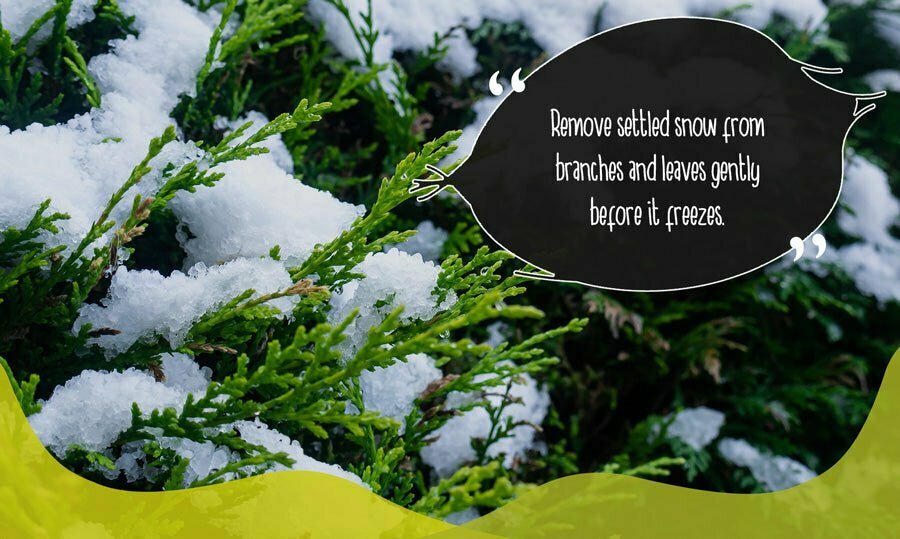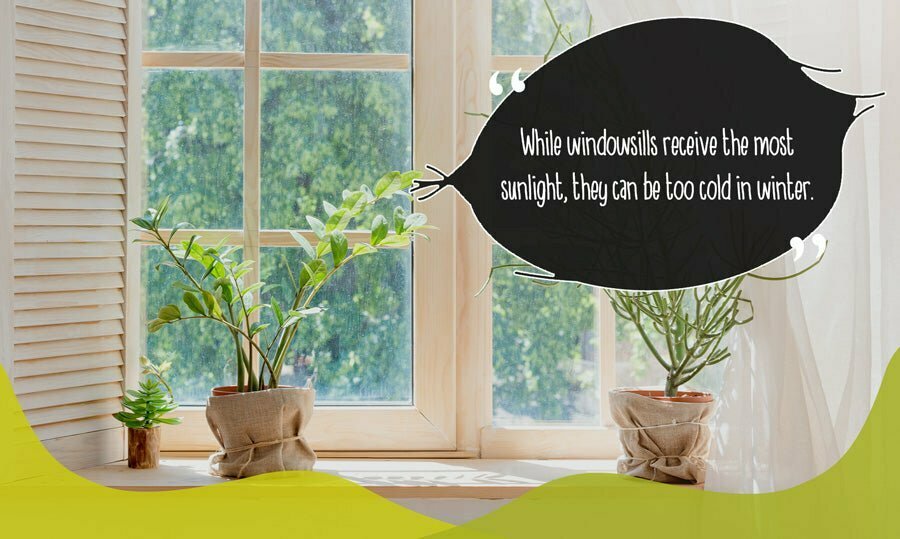How to keep plants warm in winter
From frost and heavy snow to rain and harsh winds, there are many reasons your plants don’t want to be left out in cold weather during the winter months.
Outdoor plant protection
Remove settled snow from branches and leaves gently before it freezes. This prevents branches from breaking under the weight and being cut off from sunlight and air.
Protecting containers and pot plants in winter
With less soil to retain warmth, and delicate root systems more exposed to temperature fluctuations, it’s important to keep plants in containers and pots shielded from winter’s excesses.
Wrap pots or plants with fabric
Use sacks made from burlap, jute, or hemp to cover plants overnight, particularly in cold weather. Remove the sacks during the day to allow natural light and airflow.
You can wrap containers with bubble wrap or fabric layers to insulate further. Alternatively, plastic pots can be buried into beds to place roots below ground and draw warmth from deeper soil. Otherwise, bring pot plants indoors to shelter at the first sign of frost.

Place plants in greenhouses
During the winter months, plants can be kept in best health by placing them in a greenhouse. Glass panes allow in warmth from the sun, while providing protection from wind, rain, and frost.
Try adding insulation by hanging sheets of bubble wrap or fabric. This divides the greenhouse into smaller, easier to heat sections. Alternatively, use space heaters to reduce humidity and maintain a consistent warmth.
Protective garden structures
Grow boxes or cold frames are simple, compact options for the gardener with restricted space or limited budget. With a few wood panels and a clear covering, such as sheet glass, plants have access to sunlight, protection from winter winds, and insulation from unexpected frosts.
Use a cloche to cover vulnerable plants
Small, clear coverings, such as glass bell jars, can be placed over individual plants or larger areas. Glass cloches allow sunlight and warmth to reach the plant. They also protect against heavy rain, which can cause disease in winter.
Cloches are essentially mini greenhouses. When placed on soil, they should be propped open slightly to allow airflow.

Removable plant covers
There are advantages to planting in raised beds. It affords more soil than containers, but the elevated positioning and exposed sides can result in heat loss.
Removable covers made from metal frames and repurposed bedsheets – or specialist gardening fleece – can insulate plants above ground.
If you have the space in your garden, polytunnels made from flexible transparent material allow sunlight and airflow while providing coverage, meaning they don’t need to be removed.
The simplest ways to protect plants from frost
A layer of mulch a couple of inches thick creates an insulating natural barrier that retains warmth and moisture. Mulch layers also prevent the soil structure from being compacted by heavy rain or snow. Sheep’s wool gardening fleece or grow mats over topsoil also provide adequate protection.
Before applying a layer of coir mulch or insulating fleece, water your plants. Wet soil acts as a better insulator. Make sure to top with an insulating layer to prevent freezing from the topsoil down to root level.
Outdoor plants can be covered with old blankets or bedsheets when hard frosts are due. Keep the fabric from touching plants by propping them up with stakes. Weigh or pin the fabric down on windy nights and remove in the morning for sunlight and airflow.

How to keep plants warm indoors
While windowsills receive the most sunlight, they can be too cold in winter. As with outside pots, wrapping in layers of bubble wrap or fabric helps with plant protection.
Temperature changes that cause soil to alternately freeze and thaw can result in heaving (exposure of the roots above the soil) which makes them vulnerable to climate and disease. If you can invest in heating lamps or mats, use them to warm the soil.
Porous soil can help protect plants in winter
A well-draining substrate is important for roots and overall plant health. Saturated soil in cold temperatures can encourage disease, mildew and root rot.
Consistently wet soil also contributes to shallow root growth, which weakens plants and allows them to be more easily dislodged. For outdoor plants, this creates a risk of uprooting in strong winter winds.
Protect your plants with a growing medium that is water-retentive and drains well, to give your garden all it needs to thrive in winter. Coco coir is naturally sterile, lowering the risk of inherent disease or pests and maintains an aerated structure that promotes health root growth.
Our range of high-quality peat-free compost gardening products includes coco chips, which can be used in place of mulch to keep your plants warm and healthy this winter.










